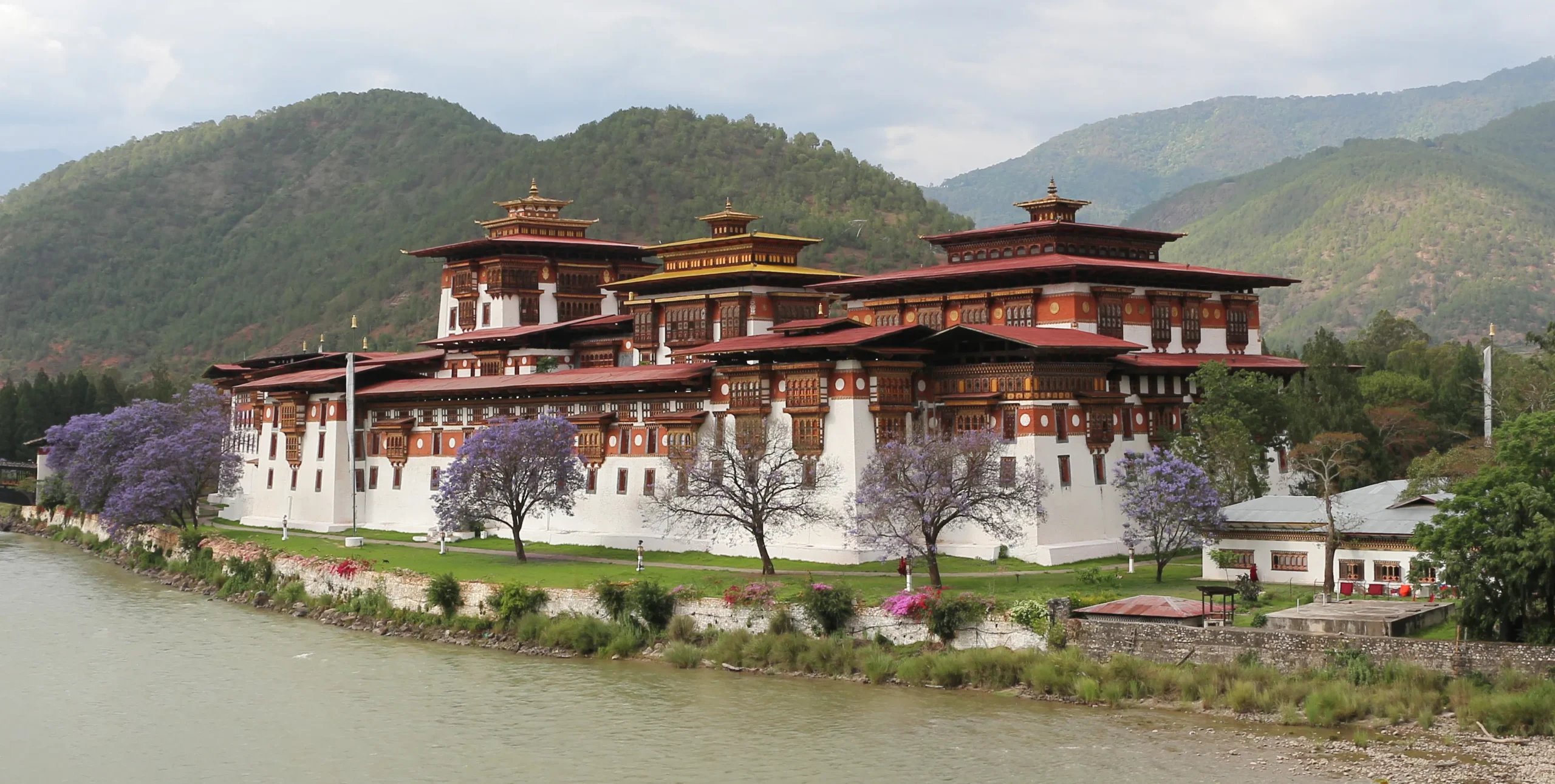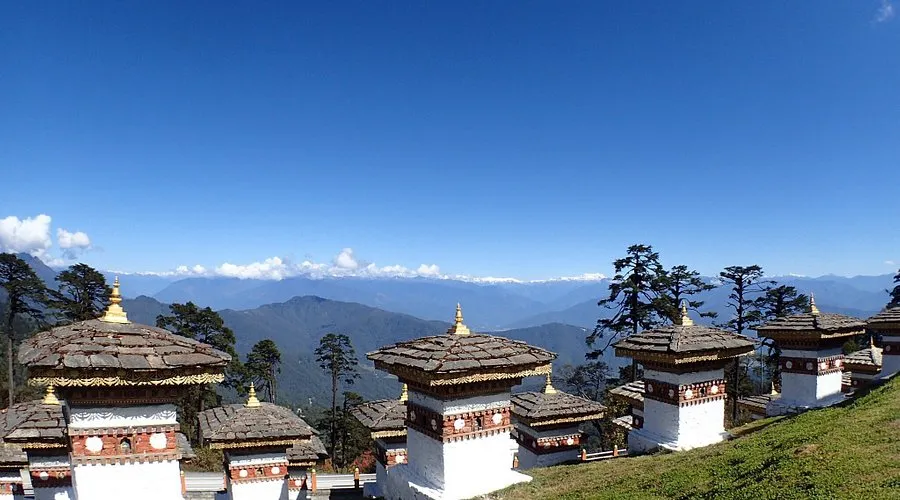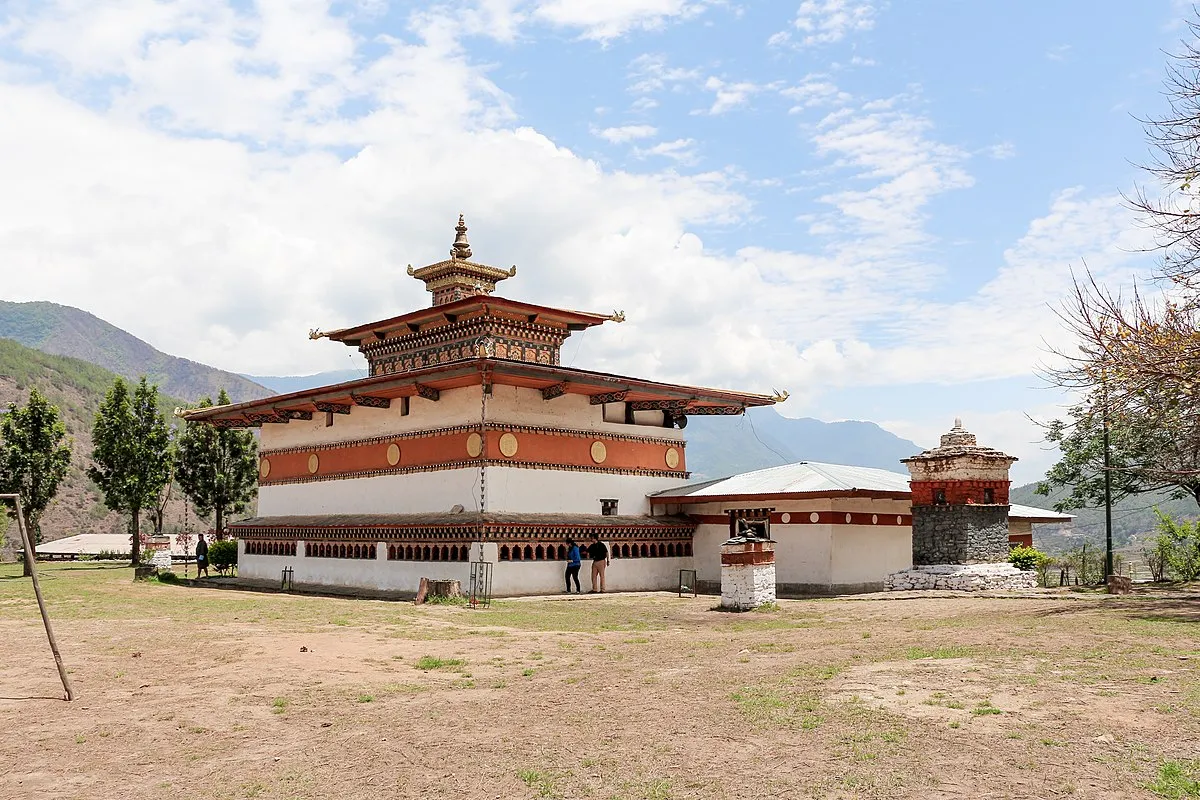1. Overview
Punakha Dzong, also known as Pungthang Dechen Phodrang (Palace of Great Bliss), is one of Bhutan’s most iconic and historically significant structures. Located at the confluence of the Pho Chhu and Mo Chhu rivers in the Punakha Valley, this majestic fortress-monastery was constructed in 1637 by Zhabdrung Ngawang Namgyal, the founder of Bhutan. It is renowned for its stunning architecture, cultural significance, and spiritual importance. Punakha Dzong is the second oldest and second largest dzong in Bhutan and has served as the administrative center of Bhutan in the past. It remains the winter residence of the central monastic body.
Location – Google Maps Link
2. History
- Constructed in 1637–38 by Zhabdrung Ngawang Namgyal.
- Located at the confluence of the Pho Chhu and Mo Chhu rivers in the Punakha Valley.
- Served as Bhutan’s capital until 1955, when Thimphu took over.
- Home to the first King of Bhutan, Ugyen Wangchuck, who was crowned here in 1907.
- Restored after a fire in 1986, the dzong was rebuilt with great care to preserve its historical and architectural integrity.
- Features a unique architectural design with whitewashed walls and golden roofs, making it visually striking.
- The dzong houses the embalmed body of Zhabdrung Ngawang Namgyal.
- Hosts the annual Punakha Drubchen and Punakha Tsechu festivals, drawing both locals and tourists.
- Serves as the winter residence for the central monastic body of Bhutan.
- A key religious and administrative center, it is known for its intricate woodwork and sacred relics.
3. What Makes Punakha Dzong Popular?
Punakha Dzong is popular for its breathtaking location, stunning architectural beauty, and historical significance. It is one of Bhutan’s most photographed landmarks due to its position between two rivers and its striking golden-roofed design. The dzong is also a center of Bhutanese spirituality and culture, with its beautiful courtyards, temples, and sacred relics. Visitors often come to explore its fascinating history, experience the annual festivals, and take in the natural beauty of the Punakha Valley.
4. Overall Ratings (1 to 5 Stars)
Overall Rating: ⭐⭐⭐⭐⭐ (5/5)
Cultural Significance: ⭐⭐⭐⭐⭐ (5/5)
Scenic Beauty: ⭐⭐⭐⭐⭐ (5/5)
Historical Importance: ⭐⭐⭐⭐⭐ (5/5)
Accessibility: ⭐⭐⭐⭐☆ (4/5)
5. Weather
Best Time to Visit: March to May and September to November
Temperature Range: 10°C to 25°C
These months offer pleasant weather for outdoor activities and exploring the dzong’s surroundings.
6. Nearest Five Hotels
- Zhingkham Resort – A comfortable resort offering scenic views of the Punakha Valley.
- Hotel Lobesa – Provides traditional Bhutanese hospitality with modern amenities.
- Punatsangchhu Cottages – Offers a peaceful retreat with river views.
- Damchen Resort – Located near the dzong, providing easy access to major attractions.
- Kichu Resort – A luxury resort offering a blend of traditional and modern comforts.
7. Timings
Open: Daily
Hours: 9:00 AM – 5:00 PM (summer)
10:00 AM – 4:00 PM (winter)
Note: Closed during religious ceremonies.
8. Time Required to Visit
Visit Duration: 1.5 to 2 hours
This allows ample time to explore the dzong’s courtyards, temples, and museum exhibits.
9. Entry Fees & Ticket Booking Details
Entry Fee:
- Adults: Nu. 500
- Children (6–18 years): Nu. 250
- Children below 6 years: Free
Booking: Tickets available on-site.
10. Things to See & Do
- Explore the Three Courtyards: Admire the dzong’s unique architectural design.
- Visit the Central Tower (Utse): Home to sacred relics and artifacts.
- Attend the Punakha Drubchen or Tsechu: Experience traditional Bhutanese festivals with mask dances and rituals.
- Photography: Capture the dzong’s beauty, especially during jacaranda bloom in spring.
- Learn about Bhutanese History: Visit the museum to understand the dzong’s role in Bhutan’s development.
11. Best Time to Visit
Season: Spring (March–May) and Autumn (September–November)
Time of Day: Morning for fewer crowds and better lighting for photography.
Day of Week: Weekdays for a quieter experience.
12. Nearest Parking Spots
- On-site parking is available near the dzong entrance.
- Public parking available in the vicinity.
- Accessible by taxi or private vehicle.
13. Tips for Visitors
- Arrive early to avoid the crowds, especially during festivals.
- Wear appropriate clothing (modest dress is required for entering the dzong).
- Take your time to explore the architecture and learn about the history.
- Bring water and snacks, especially if visiting during the warmer months.
- Respect local customs and observe the spiritual significance of the site.
14. How to Reach the Place
By Car: 2-hour drive from Thimphu to Punakha.
By Taxi: Taxis are available from Thimphu or Paro to Punakha.
By Tour: Many organized tours of Bhutan include Punakha Dzong as part of their itinerary.
15. Nearby Attractions to Combine for the Visit
- Chimi Lhakhang – A fertility temple near Punakha.
- Phobjikha Valley – A glacial valley known for its black-necked cranes in winter.
- Sangchhen Dorji Lhuendrup Nunnery – A nunnery with stunning views over Punakha Valley.
- Punakha Suspension Bridge – A beautiful bridge offering panoramic views of the valley.
- Khamsum Yulley Namgyal Chorten – A temple on a hilltop with sweeping views of the valley.


